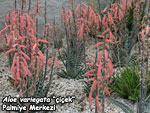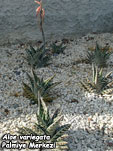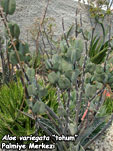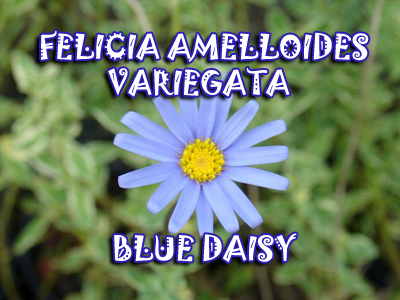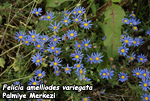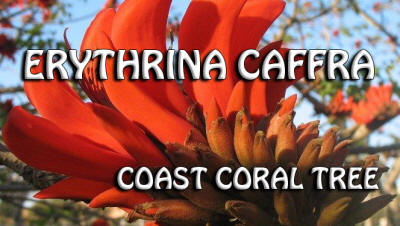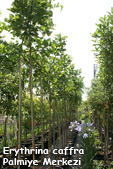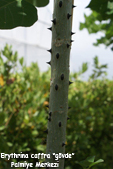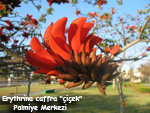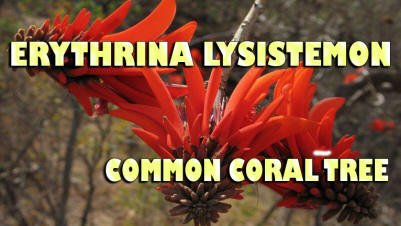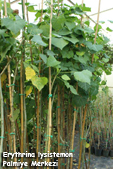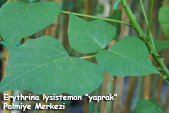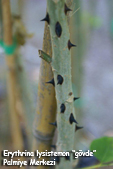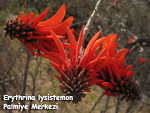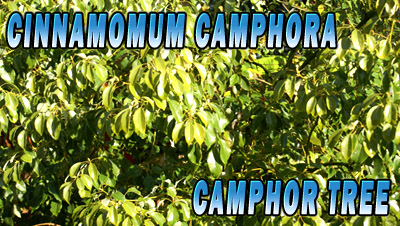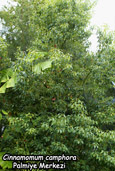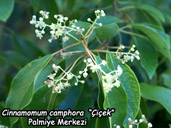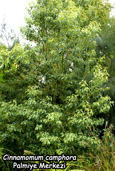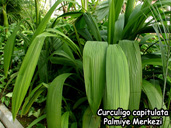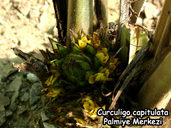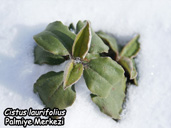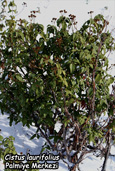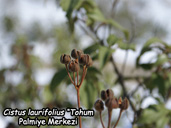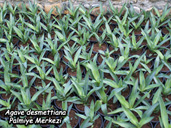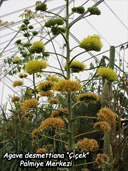 |
| |
|
|
|
If you wish this
program to be sent to your or your friends’ e-mail address,
please get a subscription (totally free of charge, and no
advertisements will be sent). I would like to get a subscription to “The Fourth Dimension in Landscape Design”>>>>>>> |
PEYZAJDA 4. BOYUT December 2010
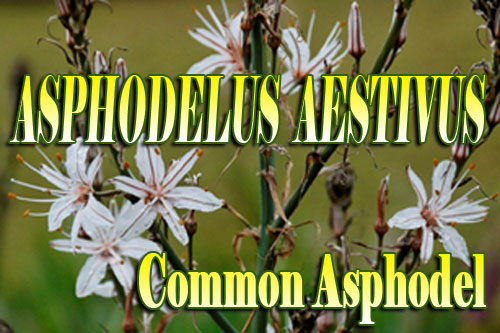 |
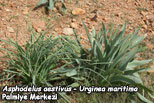 |
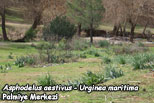 |
PEYZAJDA 4. BOYUT November 2010
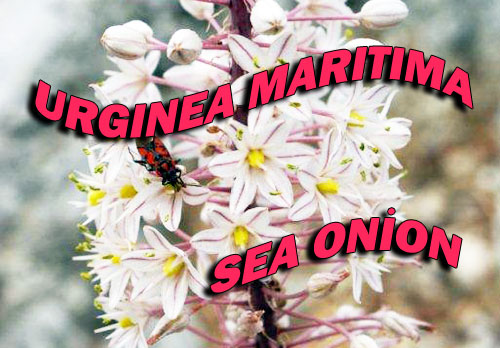 |
|
Urginea is a genus in the Hyacinthaceae family. Urginea is consist of about 100 species of bulbous perennials. They are mainly found on dry, rocky hillsides, on sandy soils near coasts or on plains or savannah, mostly in tropical Africa, with a few in the Mediterranean. They have narrowly linear, basal leaves, and are grown for their star or saucer shaped flowers. Produced in long, erect, dense racemes on leafless stems in summer and autumn. Some species are frost hardy others are not, so in cold areas, frost hardy species should be used.
Urginea maritimia is easly grown in a dry, sunny position in sandy soil. Propagation is from seeds or dividing the bulbs. The squill makes attraction with large, showy leaves in winter and with the attractive star-shaped flowers in autumn. It may be used together with other kind of bulbs as a group. Especially in geofit gardens the spring and summer garden flowers in autumn and winter flowering species are used in conjunction with the appearance of leaves and complements. |
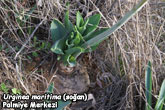 |
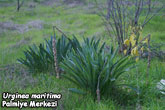 |
PEYZAJDA 4. BOYUT October 2010
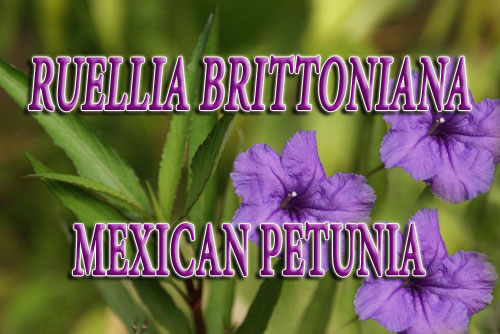 |
.jpg) |
.jpg) |
PEYZAJDA 4. BOYUT September 2010
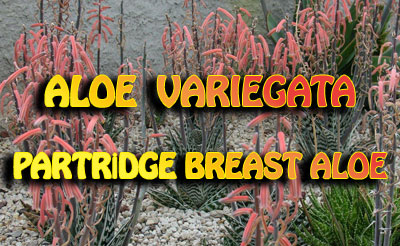 |
PEYZAJDA 4. BOYUT August 2010
|
|
 |
 |
PEYZAJDA 4. BOYUT July 2010
|
|
|
BLUE DAİSY - FELİCİA AMELLOİDES (AGATHAEA AMELLOİDES ) Felicia is a genus of about 80 species of annuals, perennials and evergreen subshrubs and (rarely) shrubs found in open sunny habitat in the Arabian Peninsula and tropical and southern Africa. Some are frost hardy, others are frost tender. They are grown for their mass of daisy-like, mainly blue flower heads with yellow disc-florets, often borne over long periods in summer. BLUE DAİSY Felicia amelloides This Felicia is usually a perennial, evergreen shrublet, about 0,5 x 0.5 m. It is densely branched and frequently has dark reddish stems. The flowerheads are typical of the Asteraceae and are about 30 mm in diameter and are borne on naked stalks up to 180 mm long. Unlike many daisies, these do not close at night. In Pretoria gardens they flower almost throughout the year, with most flowers in spring and early summer. They live a long time, usually at least five years, under normal conditions. The blue felicia bush withstands light frost. Needs a light, sandy or gravelly soil with good drainage and much compost if possible. Give a dressing of fertilizer for flowering plants (with ratio of N:P:K = 3:1:5) or a general fertilizer (ratio of 2:3:2) and mix some super phosphate into the soil. Water it regularly, but moderately, especially during the dry season. Felicia amelloides propagated by seed or cuttings in spring. The latter method is quicker and the resultant plants should flower in about a year. Once established, Blue Daisy is quick growing and can look good for many years. When young, it can be made to bush well if the main shoots are pinched out. Light pruning during the summer will encourage more crops of flowers. To improve appearance, cut off the many old flowers. After about three years, it may need to be cut back if it gets straggly. If it becomes frost-damaged, it will usually resprout and flower a little later than usual. It does not seem to suffer from pests very much, making it even more carefree for the gardener.
|
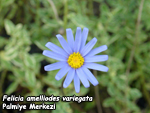 |
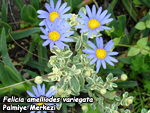 |
PEYZAJDA 4. BOYUT June 2010
|
|
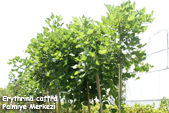 |
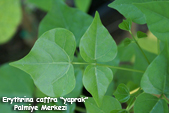 |
PEYZAJDA 4. BOYUT May 2010
|
|
PEYZAJDA 4. BOYUT April 2010
|
|
|
Cinnamomum: This genus of Lauraceae family, consist of around 250 species of evergreen trees from tropical and subtropical Asia and Australia with smooth, strongly veined leaves. Highly aromatic compounds are present in the leaves, twigs and bark of all species. Most species require tropical or subtropical conditions, with fairly high rainfall, only Cinnamomum camphora is adaptable to warm-temperate climates. CAMPHOR TREE or CAMPHOR LAUREL - CINNAMOMUM CAMPHORA Camphor Tree is a large evergreen tree that grows up to 20–30 meters tall. Cinnamomum camphora is native to Japan, China, Taiwan, Vietnam, Korea, where it is also cultivated for camphor and timber production. Invasive in Australia, Southern USA, Caribbean Islands, Southern Africa and Tanzania, Ghana, Vietnam and Hawaii. Introduced but not invasive in Southern Europe, Madagascar, Canary and Madeira Islands. The leaves have a glossy, waxy appearance and smell of camphor when crushed. A quick and easy method of identifying camphor is by crushing the leaves or peeling a twig or bark. This will release oils and the scent of camphor. Camphor is an evergreen tree with oval to elliptical leaves, arranged alternately on the stem. Slender twigs are initially green but change to reddish brown. In spring it produces bright green foliage (new emerging ones are red in color) with masses of small white flowers. It produces clusters of black berry-like fruit around one centimetre in diameter. It has a pale bark that is very rough and fissured vertically. Camphora oil was used medicinally and was also an important ingredient in the production of smokeless gunpowder. Cinnamomum camphora was introduced to Australia in 1822 as an ornamental tree for use in gardens and public parks. It has been declared a noxious weed in many parts of Queensland and New South Wales. Its massive and spreading root systems disrupt urban drainage and sewerage systems and degrade river banks. Its leaves have a very high carbon content, which damages water quality and freshwater fish habitats when they fall into streams and rivers. The camphor content of the leaf litter helps prevent other plants from germinating successfully. The seeds are attractive to birds and pass intact through the digestive system, ensuring rapid distribution Propagate by seed. USDA Hardiness Zone 9B to 11. Camphor trees grow in full sun to partial shade. They tolerate clay, loam, sand, slightly alkaline to acidic soils, and drought. It can take moderate frost, without suffering. We have seen some, in Yalova and İstanbul. In landscaping terms, they can be planted soliter or in groups as shade trees. Large trees are very like to ficus trees, superior for them, they can be grown in colder climates. They also can be planted as avenue trees in both sides of the streets. Camphor is a white crystalline substance, obtained from the tree Cinnamomum camphora. Camphor has been used for many centuries as a culinary spice, a component of incense, and as a medicine. Camphor is also a insect repellent and a flea-killing substance. Today, Camphor is widely used in cooking (mainly for dessert dishes) in India. It is widely available at Indian grocery stores and is labeled as "Edible Camphor". The resin or gum of karpura that is, the deposits in the oil cells is used for the medicinal purpose. It is useful both, internally as well as externally. Externally, the karpura oil is used for massage in rheumatic disorders, arthritis, myalgia. The swab dipped in its oil, is placed topically, to relieve the dental pain. Karpura is used in many market preparations of various balms, dental and ophthalmic preparations. Internally, karpura is used in various diseases. As it is diaphoretic, emollient, thermogenic, skin and cardiac stimulant, antiseptic, calmative, expectorant and aphrodisiac, it is used in vast range of diseases, in small quantitie.
|
PEYZAJDA 4. BOYUT March 2010
|
|
|
In this article we introduce you to a plant we have been trying for years to raise at the Palm Centre, a highly decorative plant which resembles a palm: Curculigo capitulata or Molineria capitulata, commonly known as Palm Grass. It is not to be confused with Palm-leafed Grass, Seteria palmefolia, which we shall write about in a separate article in the future. There are around 20 types of Curculigo which grow naturally in tropical and sub-tropical regions. They are long-lived plants, growing from rhizomes without any main stem or trunk. With leaves that can reach 100cm in length this plant grows from a rhizome and lives for many years. It hails from Indonesia, tropical Asia and Australia. Despite its tropical origins, it can be grown outside and will withstand light frosts. Even if such a frost results in it losing its leaves, the rhizome is protected in the soil and, as soon as the weather warms up, the plant will start to grow again. Its leaves are thin, long and lance-shaped some 2-6cm wide and up to 100cm long. The leaves resemble those of young palms, in particular those of young specimens of the Queen Palm (Syagrus romanzoffianum). The dark green leaves feature noticeable long, straight stripes and sparse hairs. The plant does not have a trunk, the leaves grow straight out from the ground. Flowers on very short stems are also produced at the base of the plant, and sometimes are almost completely hidden by the leaves. The flowers are star shaped, yellow and open in the summer months. Over time the rhizomes of the Palm Grass will multiply and propagation is either by separation of these rhizomes or from seed. In the wild Curculigo capitulata is one of the plants that grows on the floor of the rain forest, preferring partial shade, humus-rich soil and a damp atmosphere. In landscape terms in the milder areas of our region, it will grow in shade as an edging plant for paths, or under trees and can even be used to create a feature group. It is also useful as a container plant for indoor or outdoor use in shade.
|
PEYZAJDA 4. BOYUT February 2010
|
|
|
Cistus or Rock Roses are found in the wild in Turkey, the Canary Islands, Southern Europe and Northern Africa where they grow in stony or rocky environments. They are a group of around 20 species, all evergreen, and members of the Cistaceae family. All Cistus feature leaves that grow in pairs on opposite sides of a twig. The flowers are deep pink or white and have 5 petals. In generally the flowers only last for one day and open from the end of spring through to the end of the summer. Five species of Rock Roses are found in Turkiye. White flowered varieties include: Cistus laurifolius, Cistus salviifolius, Cistus monspeliensis (which is only found in Karaburun near Izmir). A pink flowered variety is found in this country along the southern coast, where it can be seen in the pine forests. This is Cistus creticus, common Turkish name ‘Laden’ which is often found in Muğla growing alongside the white flowering Cistus salviifolius.Cistus laurifolius grows near the coast sometimes in deep shade and can withstand the hardest frosts. As well as being found near to the Mediterranean, it is widespread throughout the Aegean region, in Thrace and even into central Anatolia where it can be found in the mountains around Kızılcahamam and Afyon. The lowest temperature recorded in Afyon is -270C, which this plant survives, an indication of its hardiness. At such low temperatures the leaves may turn brown but the plant does not die. It can grow to a height of 1.5 – 2m. A flower stem will produce between 3 – 8 flowers and the white flowers have yellow centres. It isn’t very fussy about soil types, although it does prefer light soil. It can withstand drought. It will grow in full sun or under trees. Propagation is from seed sown in the spring, or from cuttings or root division during the summer. It should not be pruned hard, indeed too much pruning can kill the plant. Cistus creticus – Laden: is a true Mediterranean plant. It is a bit smaller than Cistus laurifolius only reaching a height of about 1 metre. Each flower stem produces 3 – 5 pinkish-purple flowers again with yellow centres. From Crete to the eastern Mediterranean it is found near to the shoreline. In terms of propagation and care it is exactly like the other cistuses.
In landscaping terms the rock roses come into their own,
when you are creating a natural, Mediterranean plant
garden. They can be planted in small or large groups in
the open or beneath trees. They can also be used in
large rock gardens, and look good planted in a single
row to edge a path. Cistus laurifolius is
particularly a good choice for the places with heavy
winters. |
PEYZAJDA 4. BOYUT January 2010
|
|



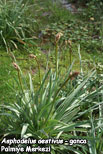
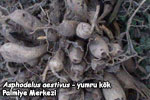
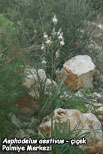
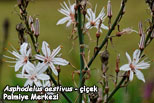
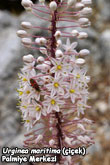
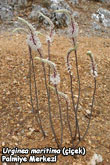

.jpg)
.jpg)
.jpg)
